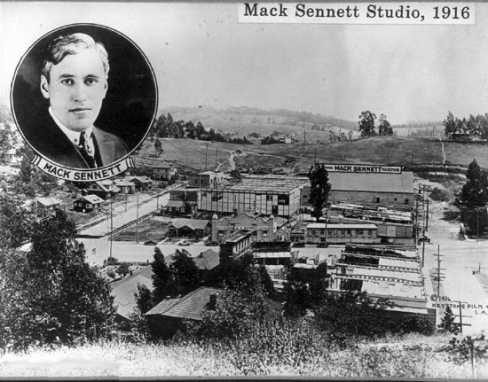|
Silent Movie History Film Clips In 1923, FDR wrote a screenplay for a silent film; click here to read about it.  An article covering the early career of twenty five year-old Irving Thalberg (1899 – 1936): legendary Hollywood executive and movie producer, whose natural abilities in the Dream Factory catapulted his meteoric rise to greater power, leaving a long string of hits and well-admired film productions in his wake before pneumonia got the better of him twelve years after this article went to press.
As delighted as this Photoplay Magazine journalist was to make the acquaintance of 1920s film star Norma Talmadge (1894 – 1957), she could not help but compare her to the reigning film diva of the period, Mary Pickford:
"Mary awakens your love."
"Norma awakens your admiration."
"Mary makes you long to be of service to her."
"Norma makes you long to have her friendship."
"Mary Pickford is a sort of divine child, who always seems far away from you, glowing in a soft light..."
"Norma Talmadge is an intelligent, brilliant woman of the world, with every faculty keyed to the highest pitch..."
The interview was conducted by the versatile Adela Rogers St. Johns (1894 – 1988): a veteran journalist from Hollywood's earliest days, she also made her mark writing screenplays, novels and toiled in the precincts as one of the first woman police reporters. A reporter from Photoplay Magazine let all her eager readers in on the excitement from the glamorous set of the Essanay Film Manufacturing Company (Illinois) where the comedy, "Actor Finney's Finnish" (1914) was being shot.
The silent short was directed and performed by those who would be participating steadily during Hollywood's next thirty year spree: E. Mason Hopper (1885 - 1967), Director; Wallace Beery (1885 - 1949), leading man; Eddie Redway (1869 - 1919), co-star; Leo White (1882 - 1948), co-star; Bobbie Bolder (1859-1937) co-star, Ruth Hennesy (no dates), actress. No doubt, this is one of the funniest pieces you are likely to find on the topic of acting and costuming in silent movies. It was written by Frederick Lewis Allen (1890 - 1954) and Frank Tuttle (1892 - 1963); both men approached the movies with the low expectations that were probably all too typical of theater lovers at that time. An interview with the silent film actress, Blanche Sweet (1895-1986) who, at that point in her career, had been a "photoplayer" (ie. an actor) for only six years. Prior to her contract with The Lasky Company, where she was obliged to perform at the time of this interview, she had toiled in the vineyards of such studios as Reliance and Biograph (where she was nick-named, "The Biograph Blonde"). Unlike her co-swells in that young industry, who liked to read and re-read their recent interviews from Motion Picture Magazine while loitering around the sets, we read that Blanche Sweet was very fond of reading Tennyson, Kipling and the novels of Edward Phillips Oppenheim (1866-1946). During the course of her career she had appeared in well over one hundred films. Click here to read magazine articles about D.W. Griffith.
Click here to read articles about another Hollywood blonde: Marilyn Monroe. This one is from the "more things change, the more they stay the same" department; it was penned by an outraged woman who was plenty peeved that nascent Hollywood chose to cast geezers to play the rolls of mothers in their movies. In light of the fact that women had babies at far, far younger ages one hundred years ago, she illustrated her point with an anecdote pulled from the annals of the Chicago Police Department. |
MORE ARTICLES >>> PAGE: * 1 * 2 * 3 * 4 * 5 * 6 * 7 * 8 * 9 * 10 * 11 * 12 * > NEXT |
|